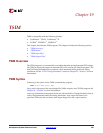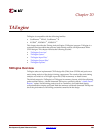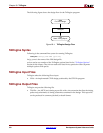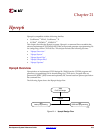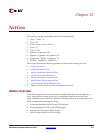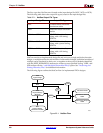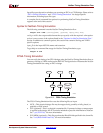
314 www.xilinx.com Development System Reference Guide
Chapter 21: Hprep6
R
Hprep6 Syntax
Following is the command line syntax for running the Hprep6 program:
hprep6 –i design_name.vm6 [options]
design_name is the name of the input design file. The -i option is required to specify the
input .vm6 file.
options can be any number of the Hprep6 options listed in the “Hprep6 Options” section of
this chapter. They do not need to be listed in any particular order. Separate multiple
options with spaces.
Hprep6 Input Files
Hprep6 uses the following file as input:
• VM6—An implemented CPLD design file from the CPLDfit command line program.
See Chapter 18, “CPLDfit” for additional information.
Hprep6 Output Files
Hprep6 outputs the following files:
• JED file—A JEDEC file used for CPLD programming
• ISC file—A IEEE1532 file used for CPLD programming
Hprep6 Options
This section describes the Hprep6 command line options.
–autosig (Automatically Generate Signature)
The -autosig option allows the iMPACT configuration software to automatically generate
a signature based on the checksum of the JEDEC file. If the -n <signature> option is
supplied, -autosig is ignored.
Note:
This option is applicable only to the XC9500/XL/XV families.
–intstyle (Integration Style)
–intstyle {ise | xflow | silent}
The –intstyle option reduces screen output based on the integration style you are running.
When using the –intstyle option, one of three modes must be specified: ise, xflow, or silent.
The mode sets the way information is displayed in the following ways:
–intstyle ise
This mode indicates the program is being run as part of an integrated design
environment.
–intstyle xflow
This mode indicates the program is being run as part of an integrated batch flow.
–intstyle silent
This mode limits screen output to warning and error messages only.




